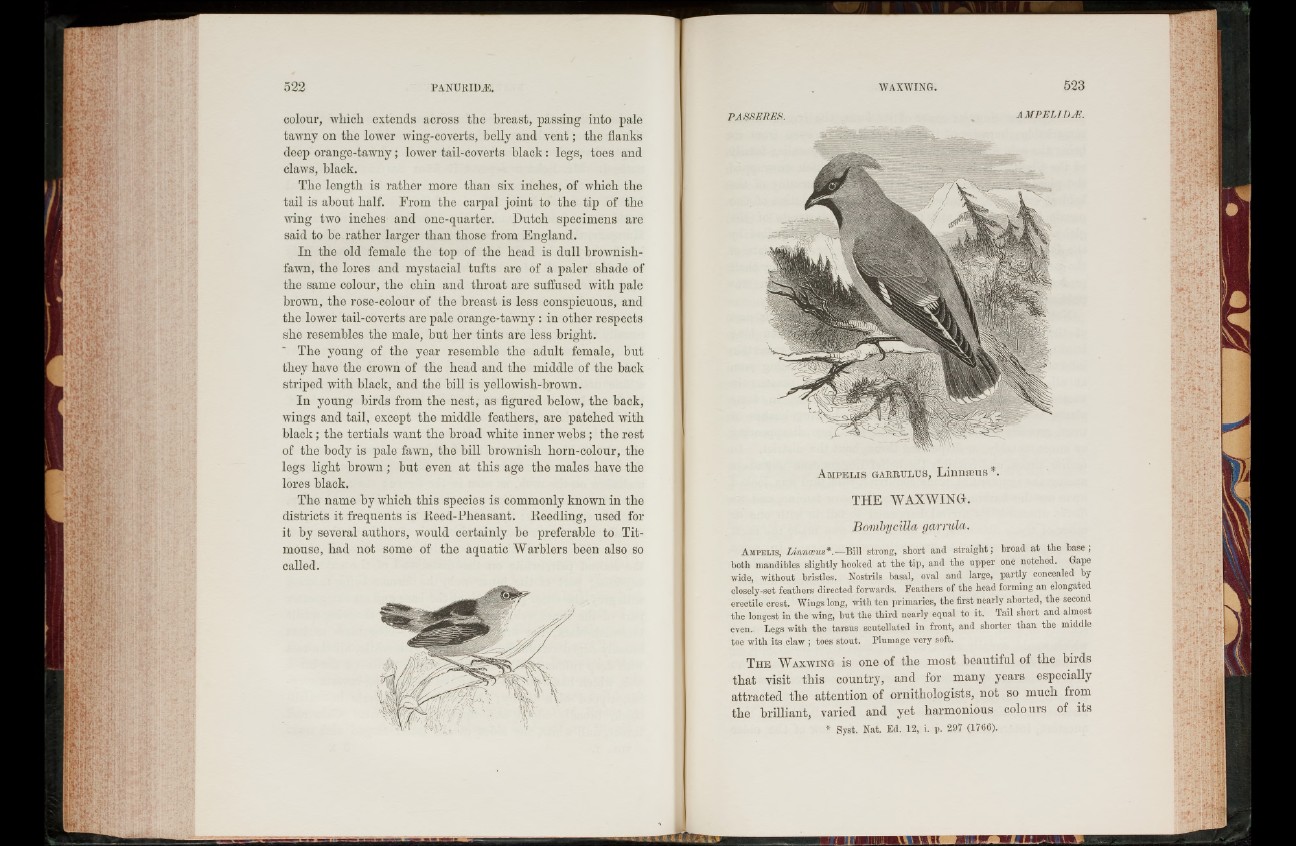
colour, which extends across the breast, passing into pale
tawny on the lower wing-coverts, belly and v en t; the flanks
deep orange-tawny; lower tail-coverts black: legs, toes and
claws, black.
The length is rather more than six inches, of which the
tail is about half. From the carpal joint to the tip of the
wing two inches and one-quarter. Dutch specimens are
said to be rather larger than those from England.
In the old female the top of the head is dull hrownisli-
fawn, the lores and mystacial tufts are of a paler shade of
the same colour, the chin and throat are suffused with pale
brown, the rose-colour of the breast is less conspicuous, and
the lower tail-coverts are pale orange-tawny : in other respects
she resembles the male, hut her tints are less bright.
The young of the year resemble the adult female, hut
they have the crown of the head and the middle of the back
striped with black, and the bill is yellowisli-brown.
In young birds from the nest, as figured below, the hack,
wings and tail, except the middle feathers, are patched with
black; the tertials want the broad white inner webs ; the rest
of the body is pale fawn, the bill brownish horn-colour, the
legs light brown; but even at this age the males have the
lores black.
The name by which this species is commonly known in the
districts it frequents is Reed-Pheasant. Reedling, used for
it by several authors, would certainly be preferable to Titmouse,
had not some of the aquatic Warblers been also so
called.
A m p e l is g a r r u l u s , Linnaeus *.
THE WAX WIN(I.
Bombycilla garrula.
A m p e l i s , Linrueus*.—Bill strong, short and straight; hroad at the base,
both mandibles slightly hooked at the tip, and the upper one notched. Gape
wide, without bristles. Nostrils basal, oval and large, partly concealed by
closely-set feathers directed forwards. Feathers of the head forming an elongated
erectile crest. Wings long, with ten primaries, the first nearly aborted, the second
the longest in the wing, but the third nearly equal to it. Tail short and almost
even. Legs with the tarsus scutellated in front, and shorter than the middle
toe with its claw ; toes stout. Plumage very soft.
T h e W a xw in g is one of the most beautiful of the birds
that visit this country, and for many years especially
attracted the attention of ornithologists, not so much fiom
the brilliant, varied and yet harmonious colours of its
* Syst. Nat. Ed. 12, i. p. 297 (1766).